I get a lot of emails from people wanting help with mushroom identification. Unfortunately, identifying mushrooms from just a picture and a brief description can be very difficult.
Since there are so many factors to consider, I built this page to show beginners the thought process associated with identifying different types of mushrooms. There are some crucial factors to observe besides just color and size.
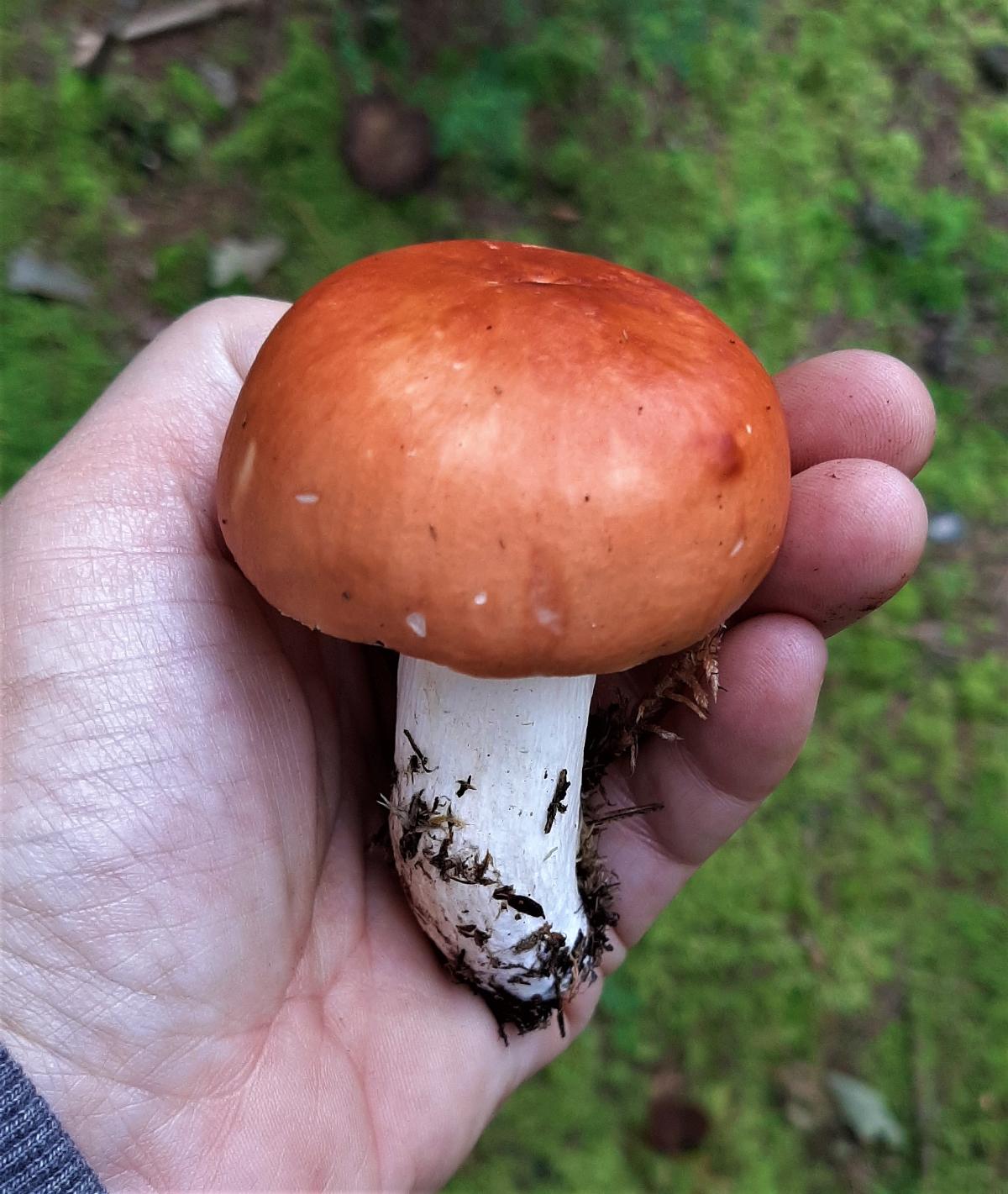
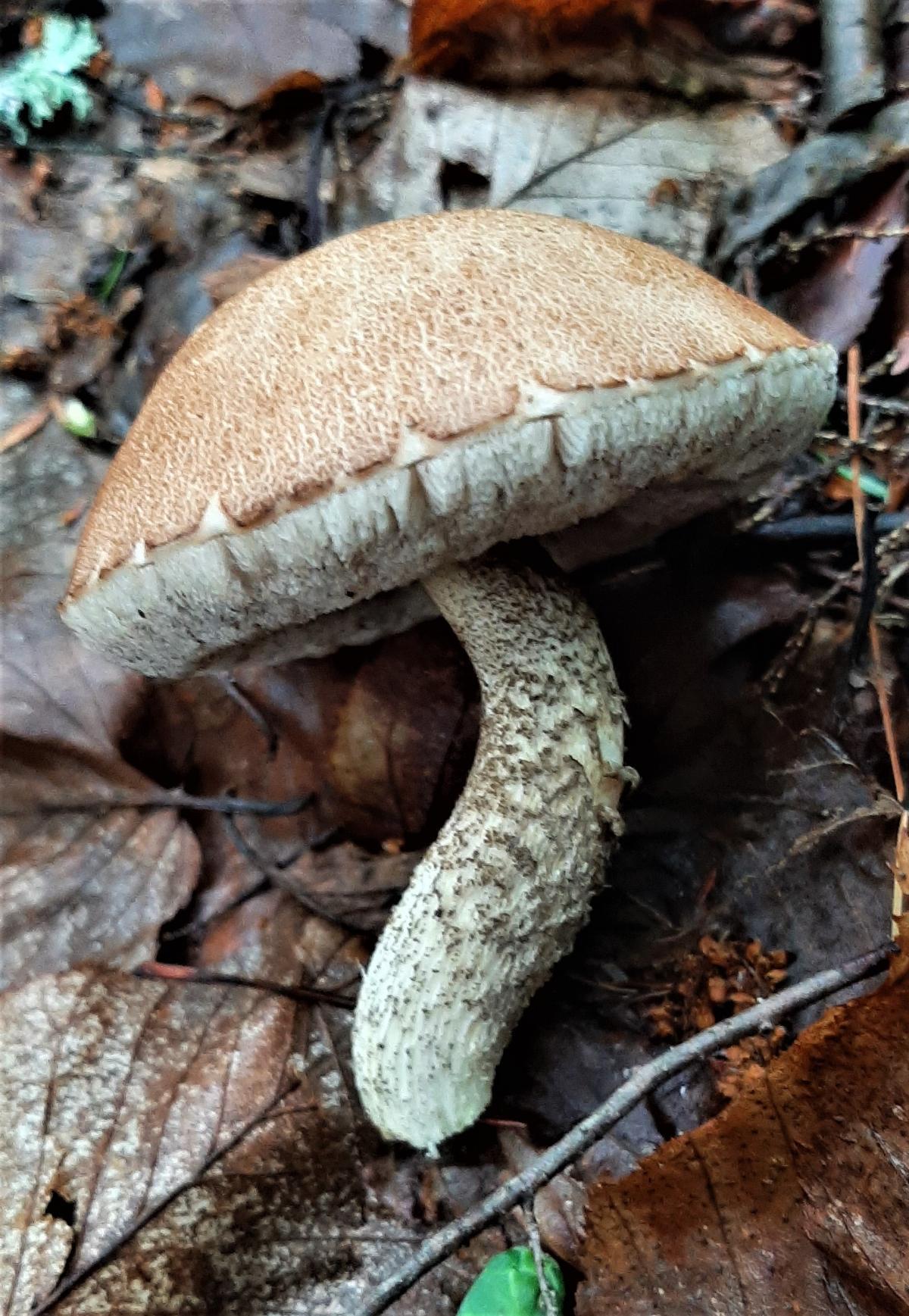
I’d divided this page into two sections. The first outlines things to look for when finding a new mushroom. The other contains five examples of mushroom identification. These lists and examples are by no means exhaustive, but they do give you a good feel for the basic process.
As always, never eat anything based on what you read here or anywhere else on the Internet. Nothing takes the place of hands-on instruction!
Eight Great Mushroom Identification Traits
These are in no particular order. Click on the links to learn more.
Gills – What sort of spore-producing structures do you see? How are they attached? Be it gills, pores, or teeth, this is important to know.
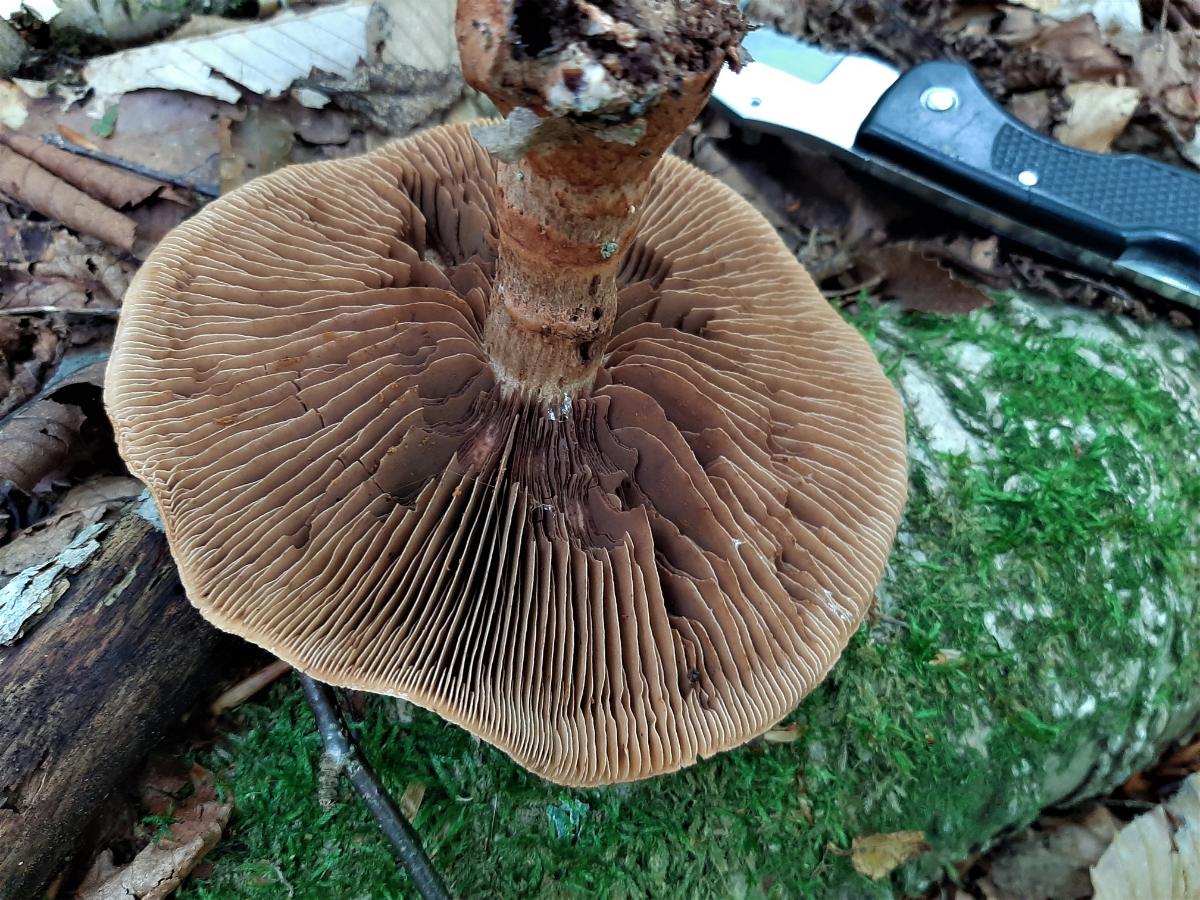
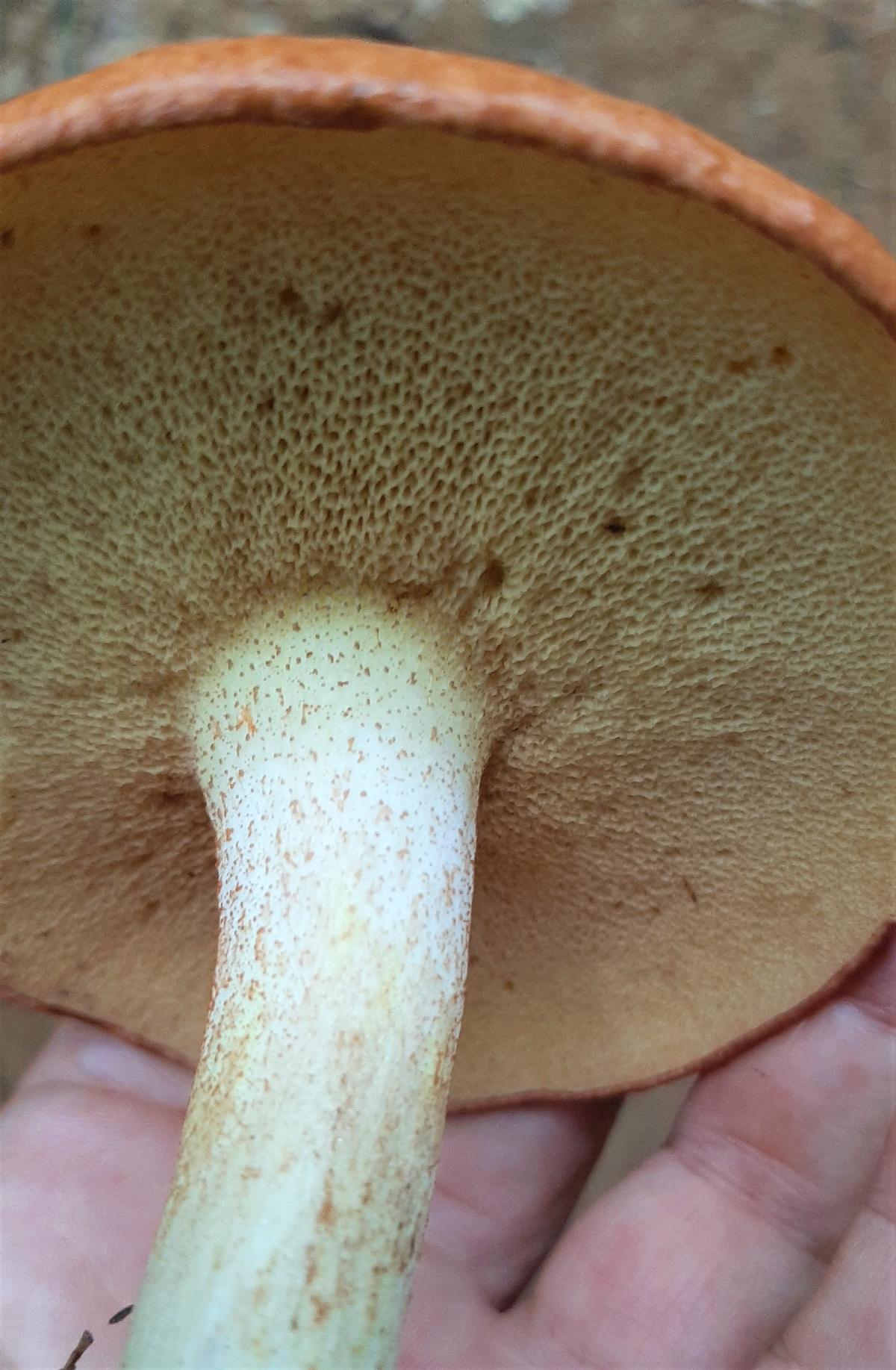

Stalk description – Make note of the size, shape, color, and whether or not it is hollow.
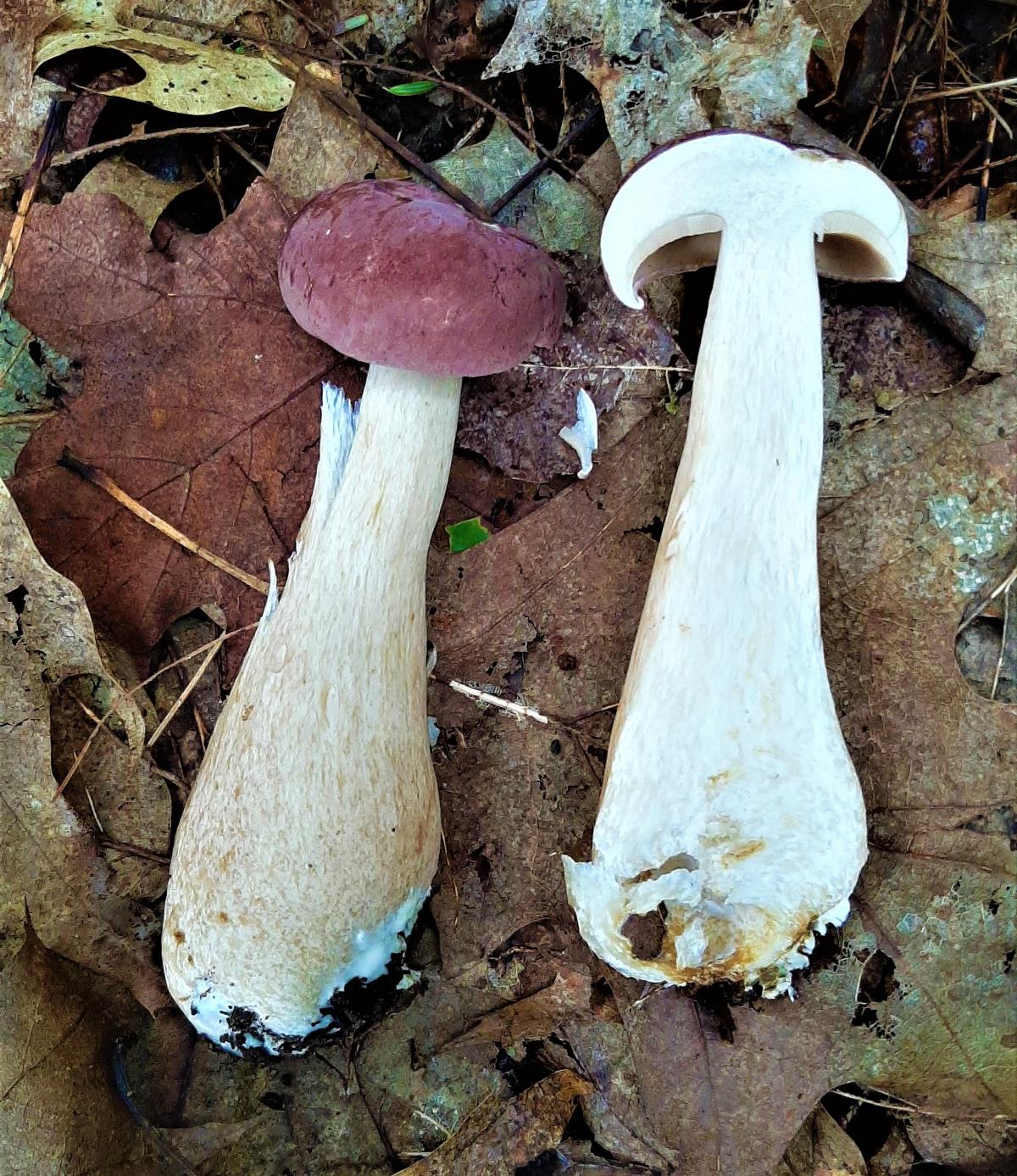
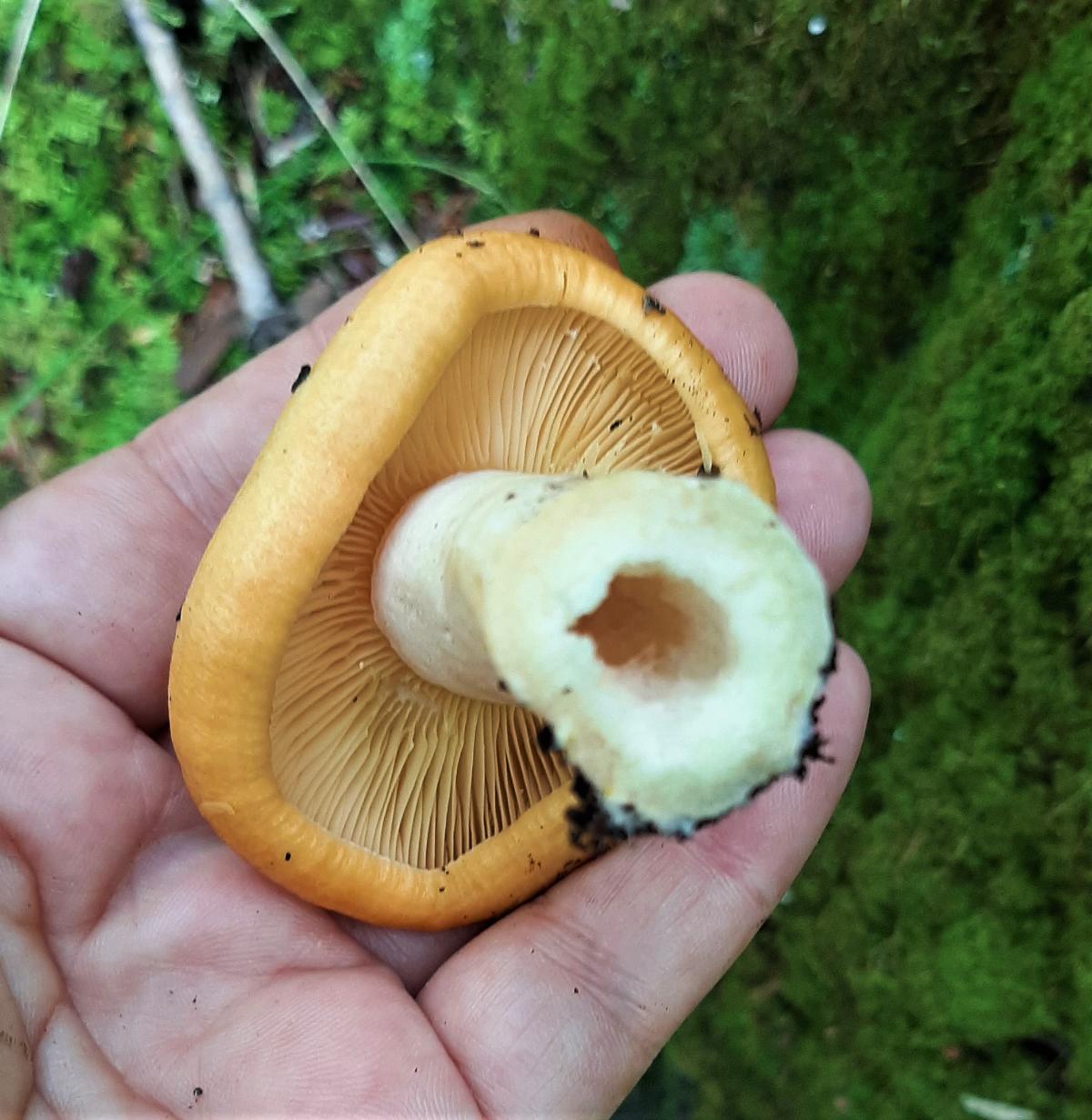
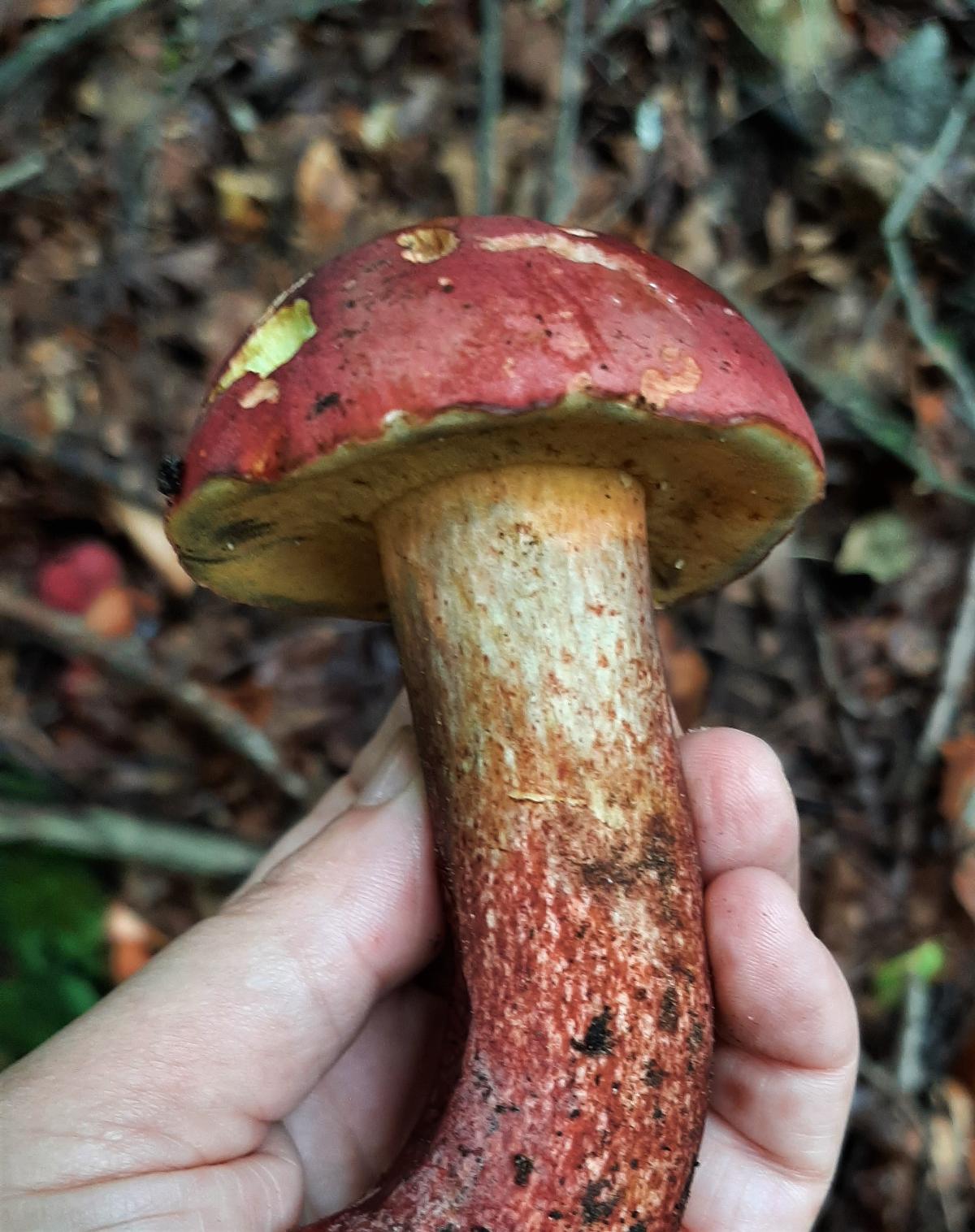
Spore color – Another extremely important mushroom identification characteristic. You will have to make a spore print to know this.
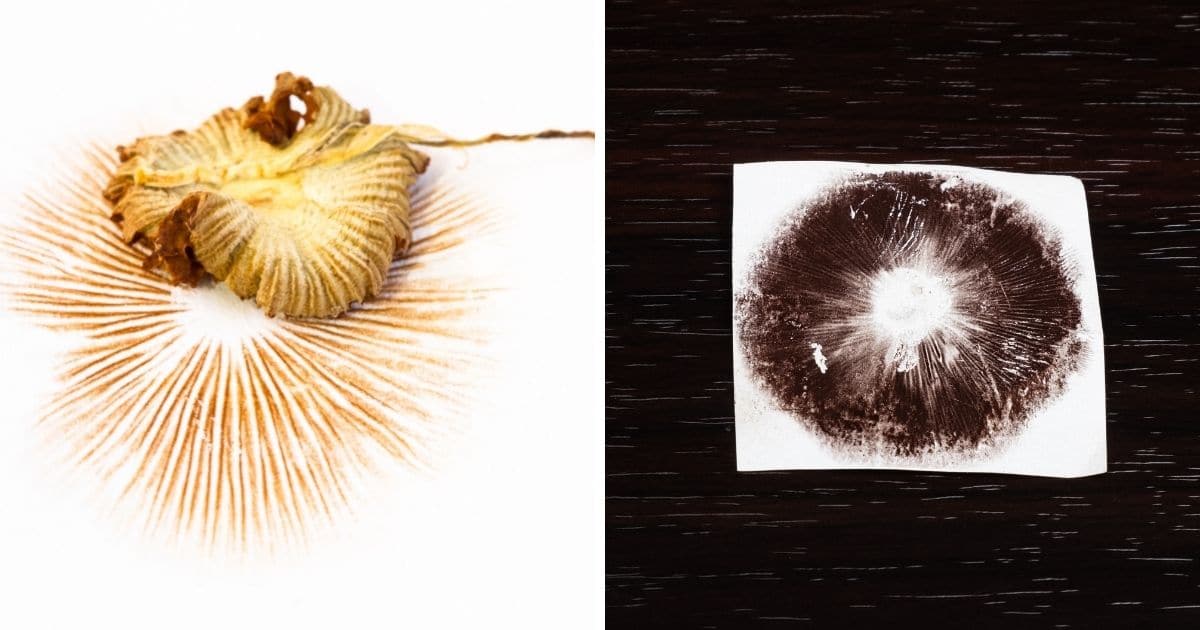
Bruising when touched – Does it change color or bleed any liquid when it’s sliced in half or grasped firmly?
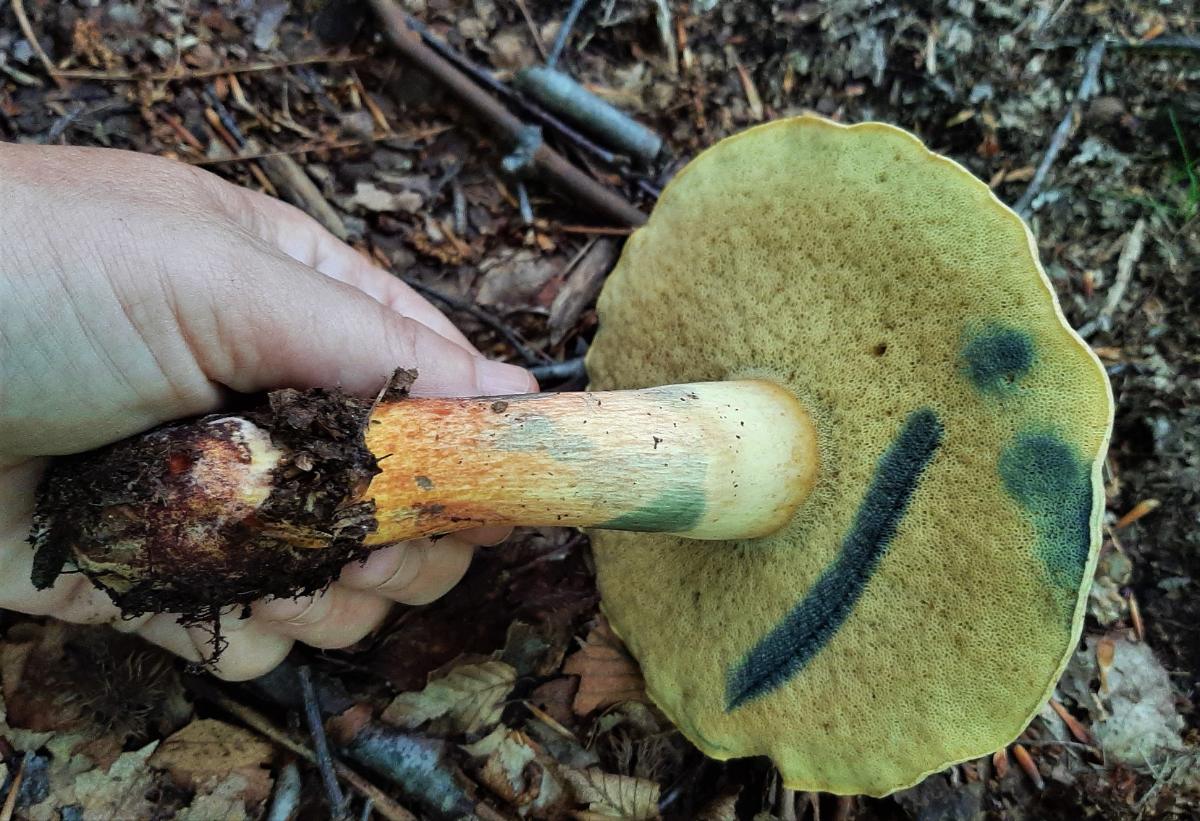
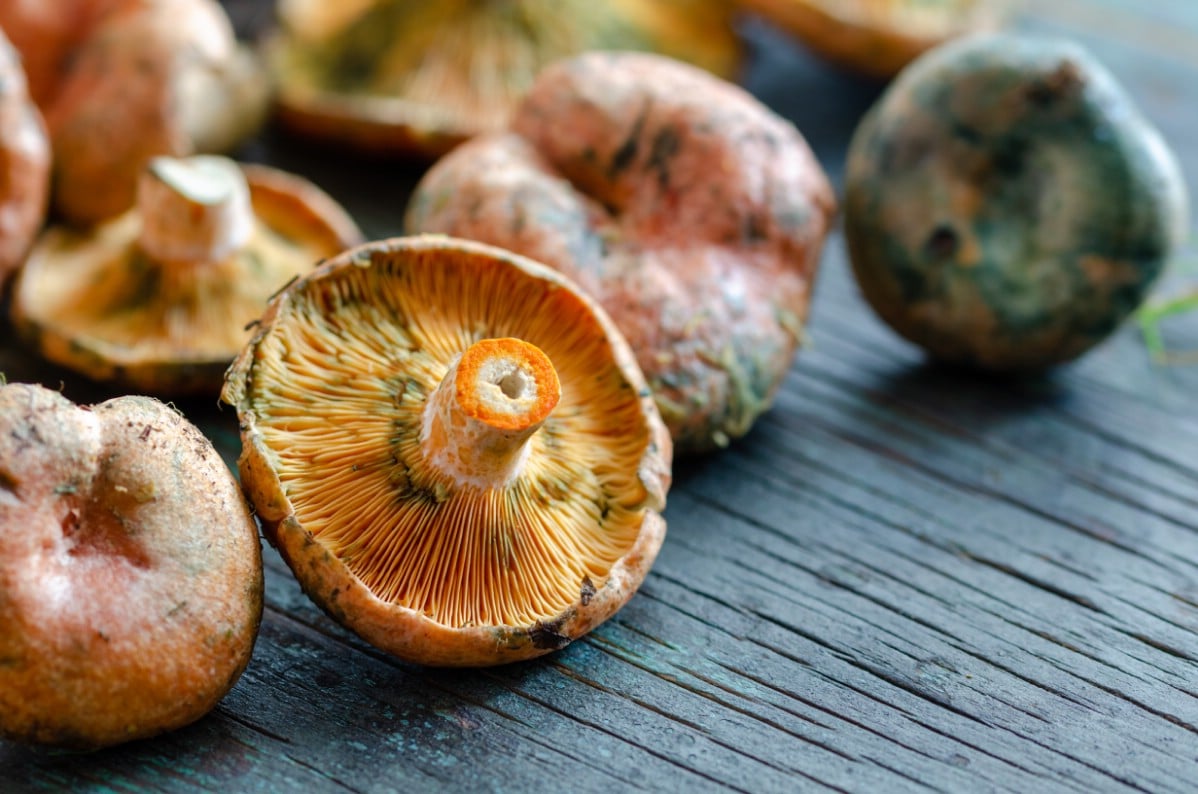
Habitat – Anything about the surrounding area. This includes trees, temperature, soil, etc.
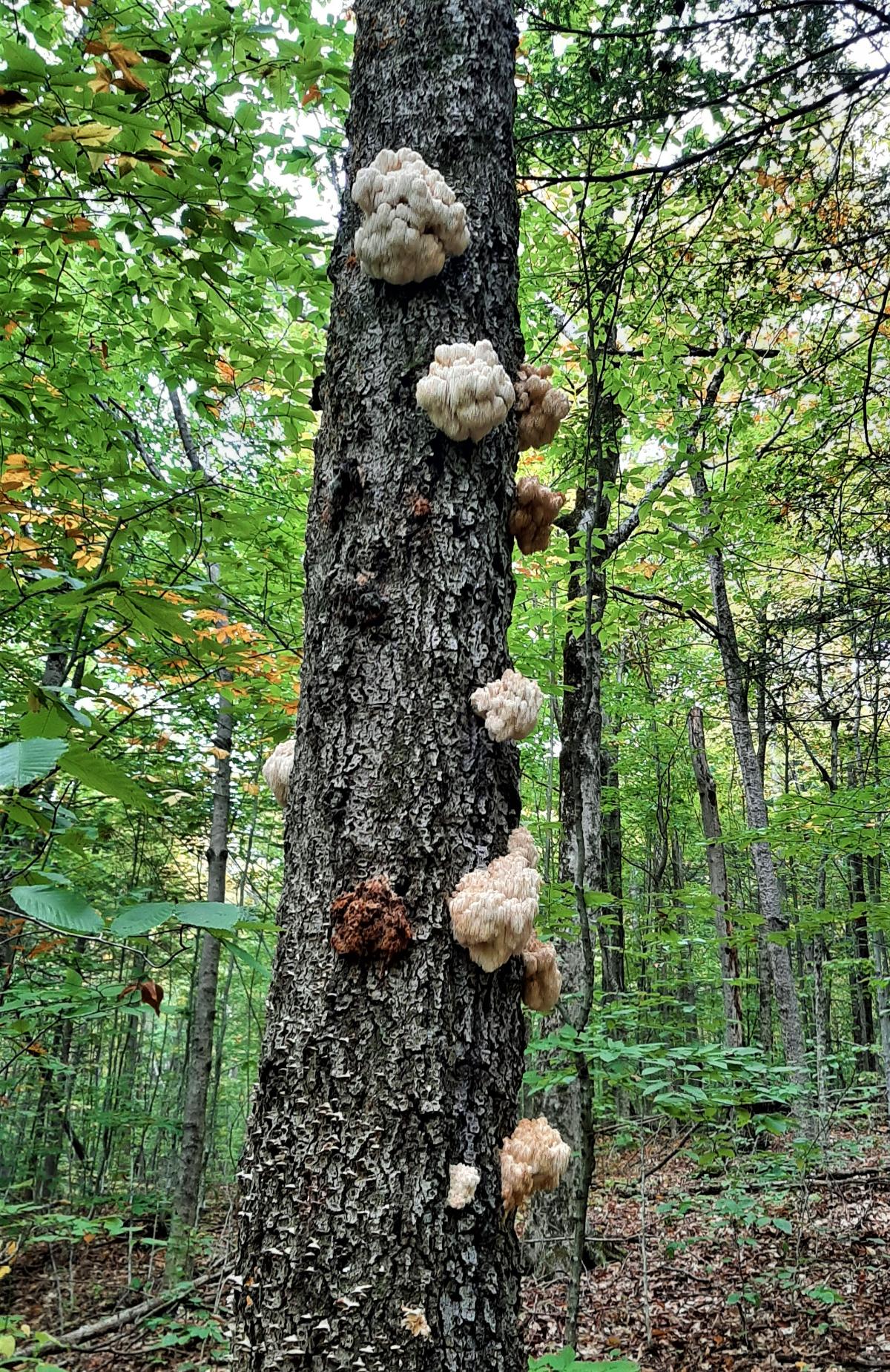
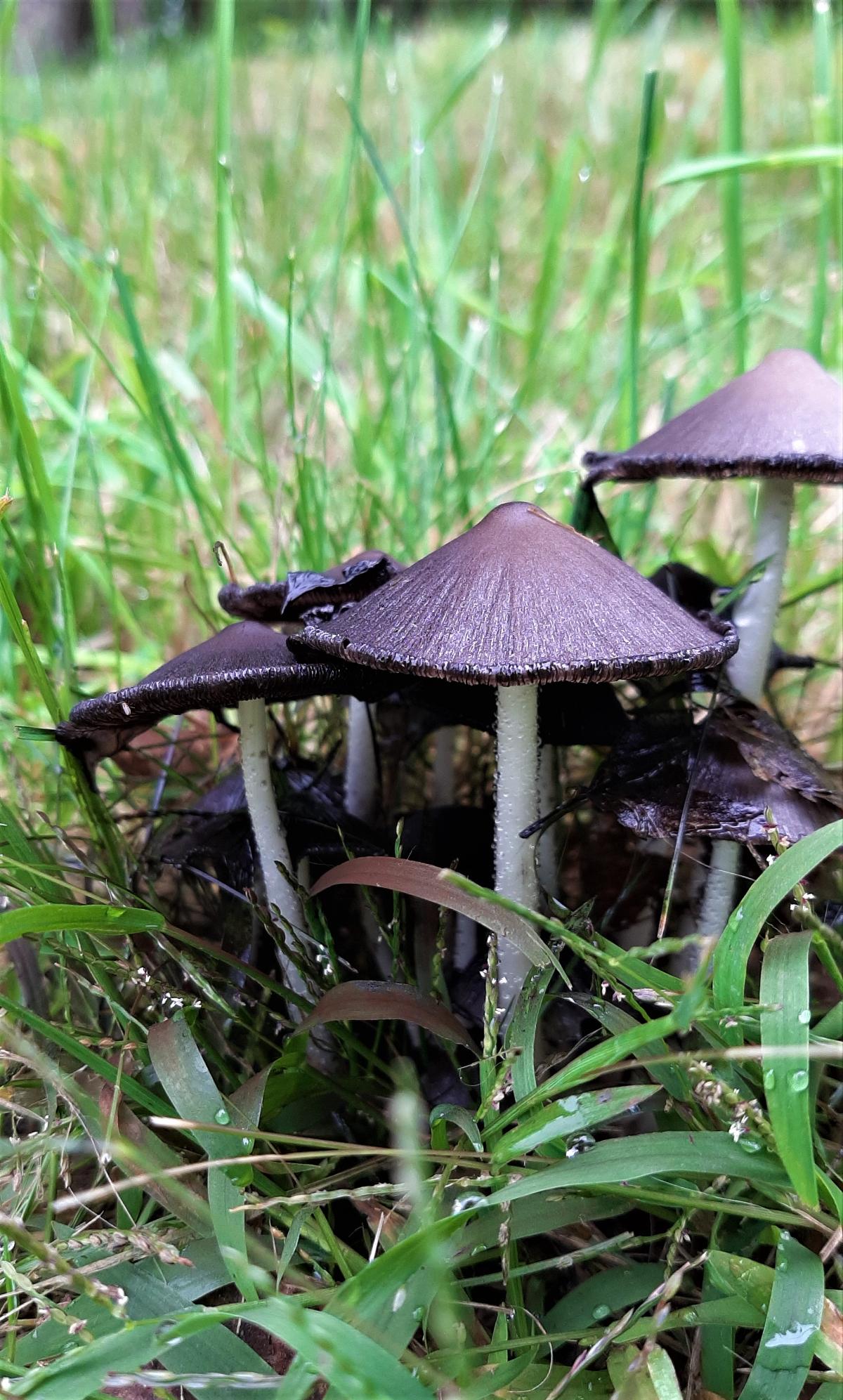
Time of year – Certain mushrooms fruit during certain times of the year.
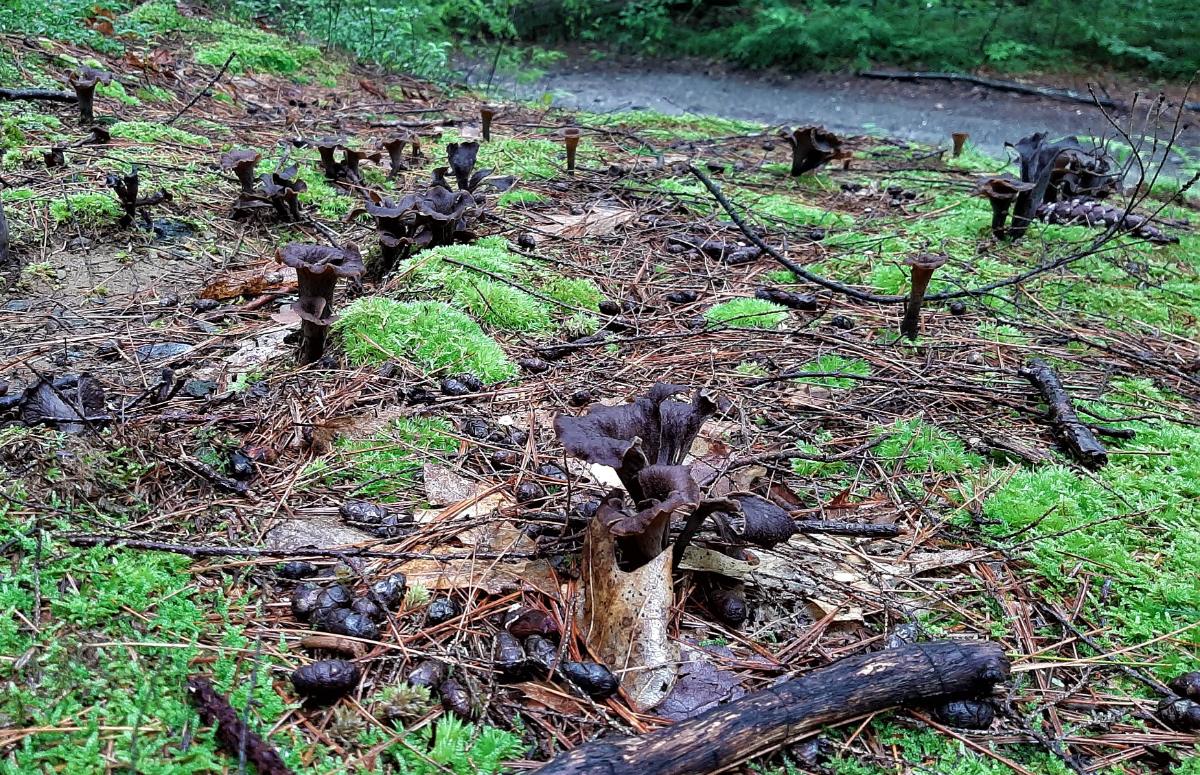
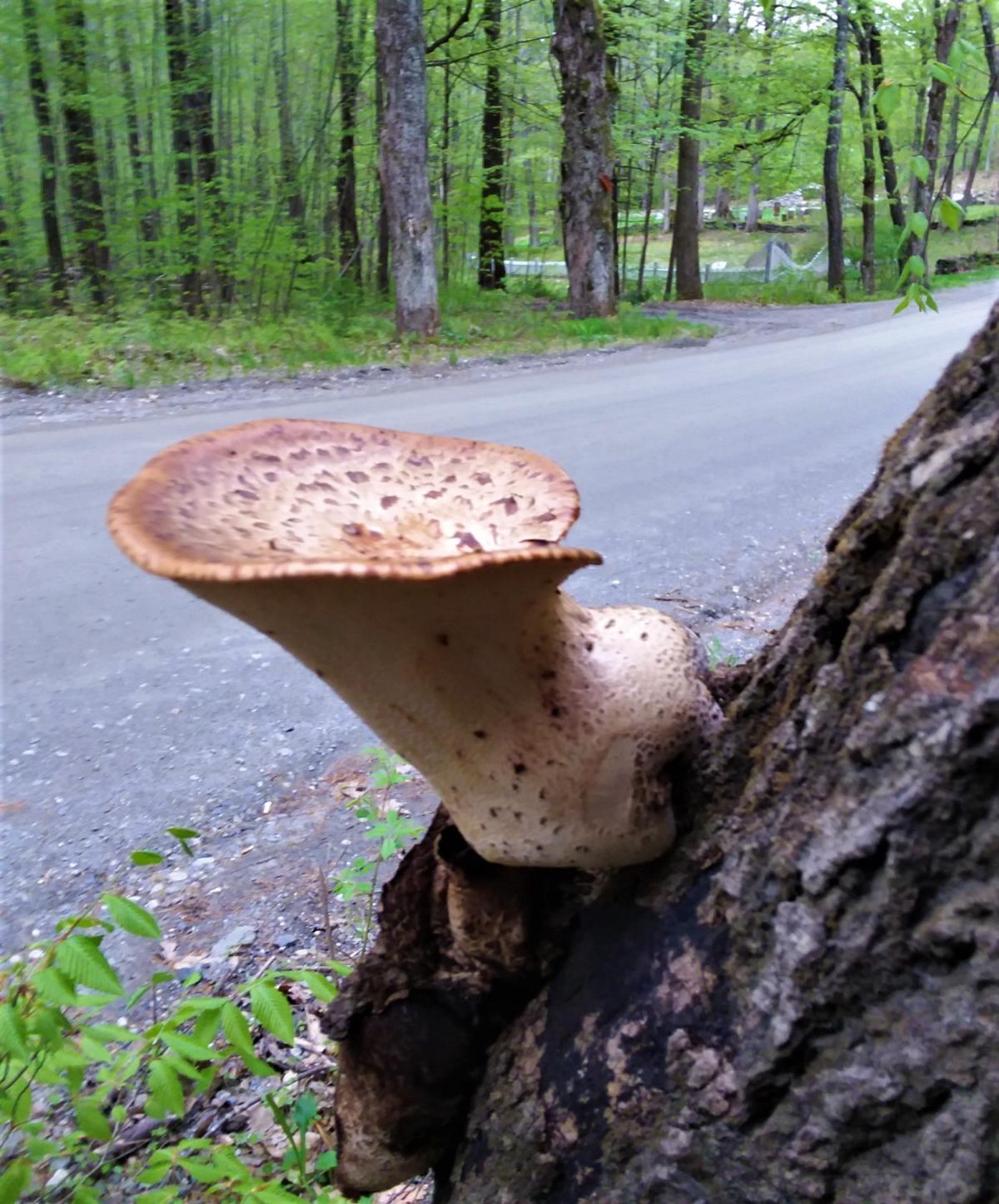
Cap description – Like the stalk, note all physical characteristics of the cap.
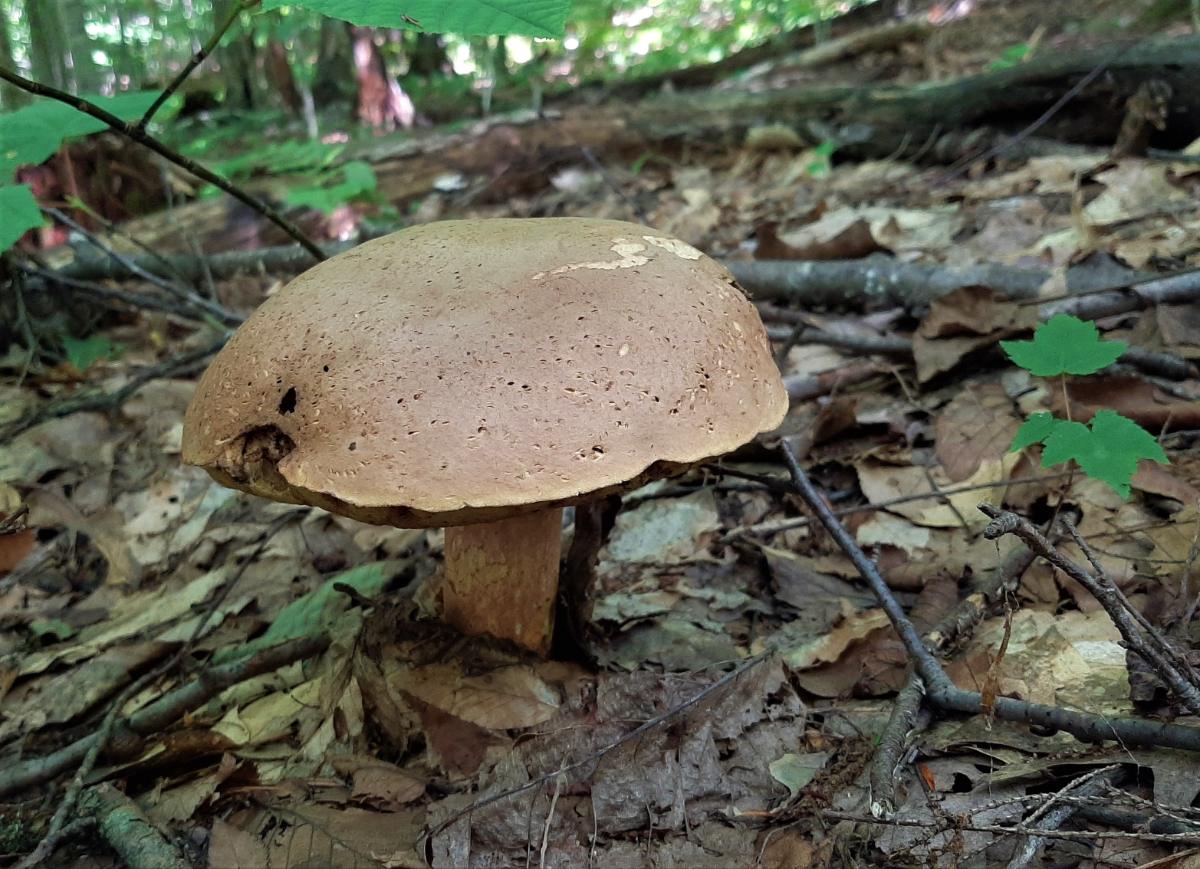
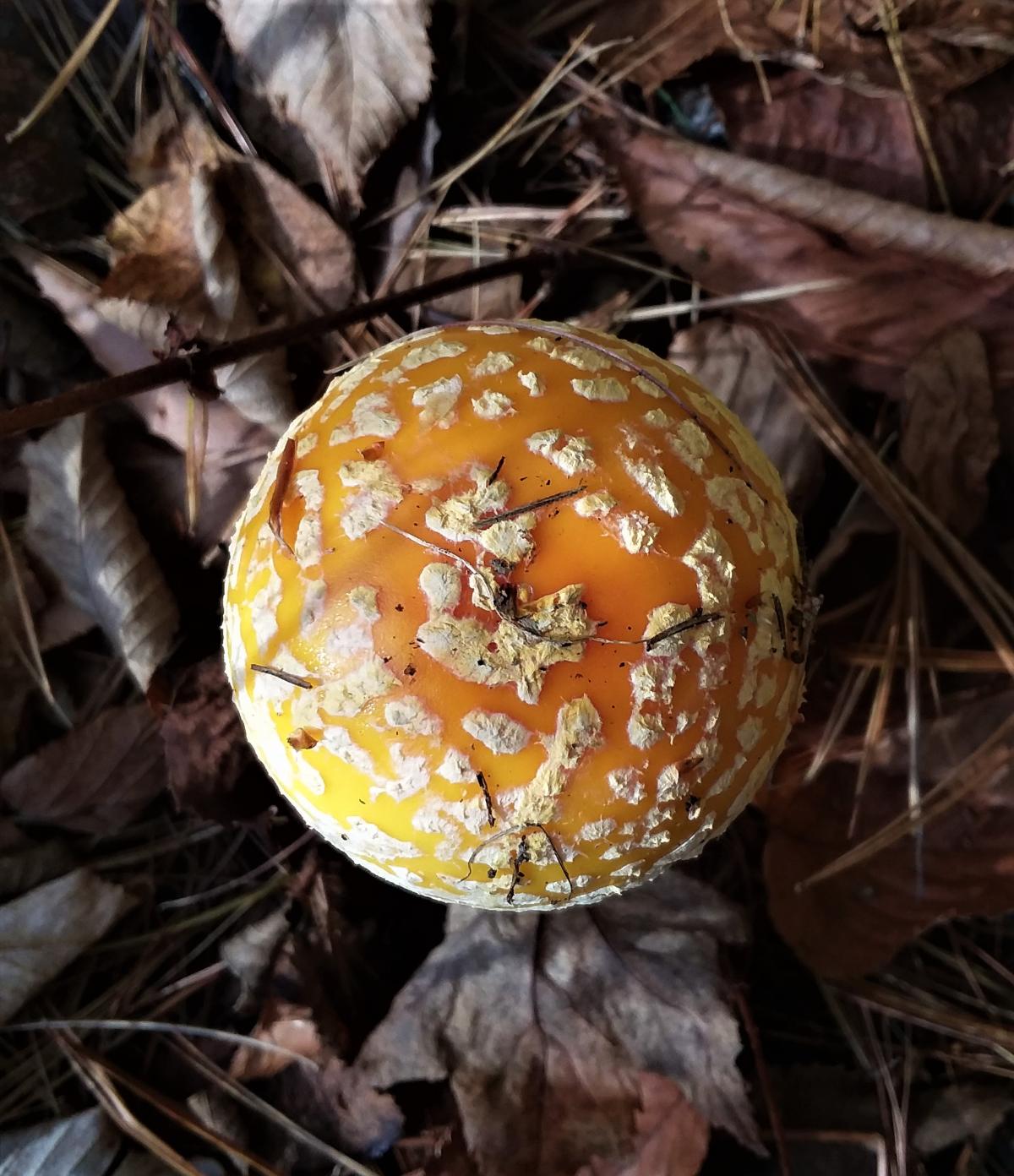
Smell and taste – Don’t leave out these sensations. Smell and taste may tell you something too. (If tasting, only try the tiniest amount!)
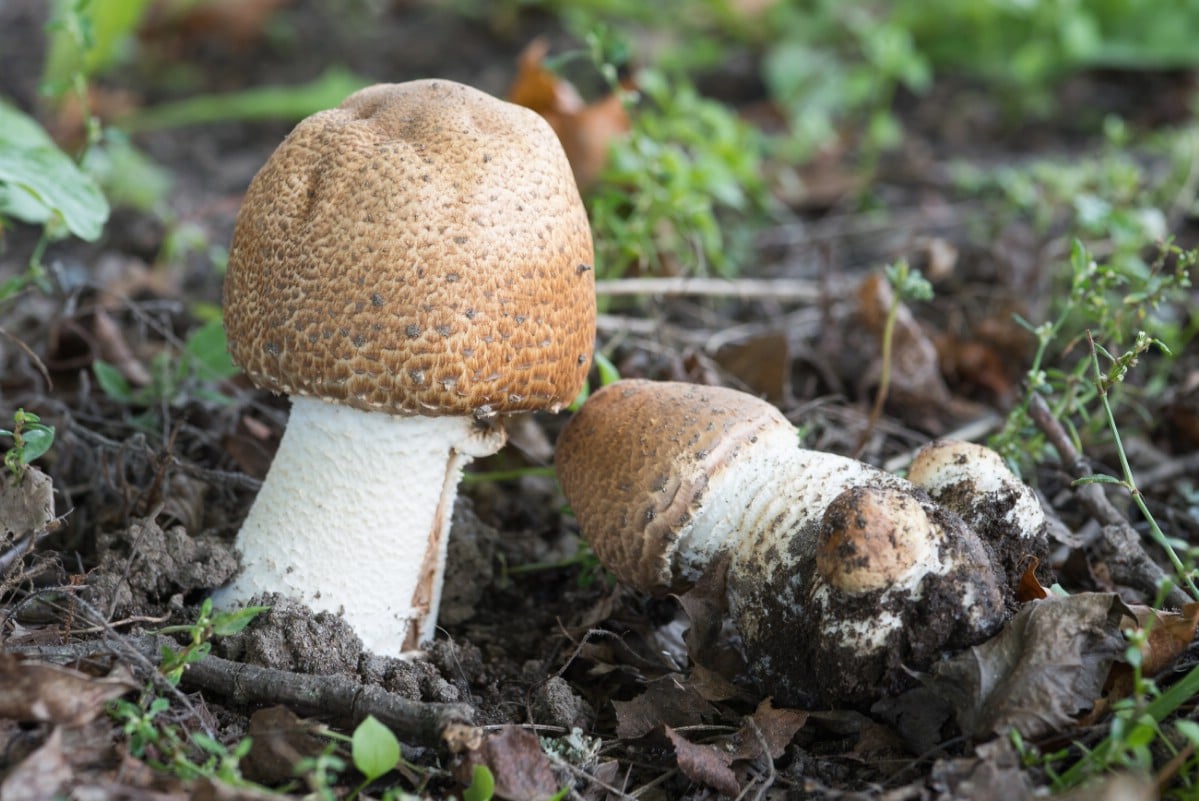
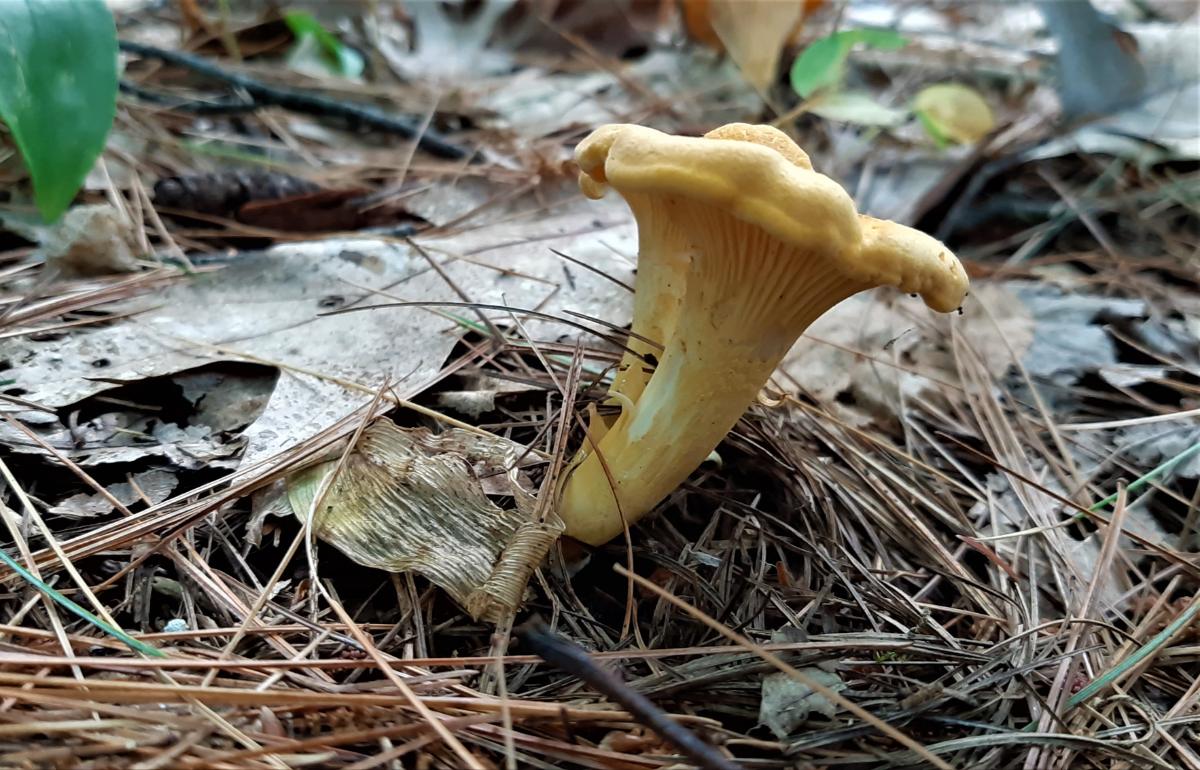
There’s much more to note about a mushroom than just these eight things. Some mushrooms display a chemical reaction when exposed to certain substances. Others are distinguished by microscopic characteristics.
For our purposes of beginner’s mushroom identification, learning to examine these eight is a good start.
Five Different Examples
Below are five different mushroom examples. Follow along and apply this type of analysis to your own finds! Mushroom identification is easier when you break down the characteristics.
Pick up a highly rated guidebook for your region if you don’t already have one.
I found all of these mushrooms in New Hampshire or Vermont.
Old Man of the Woods
Chanterelle
Northern Tooth
Russula
Honey Fungus
Old Man of the Woods (Strobilomyces floccopus)
No, it’s not that weird guy who lives in the forest behind your local bike path. This is a good beginner mushroom.
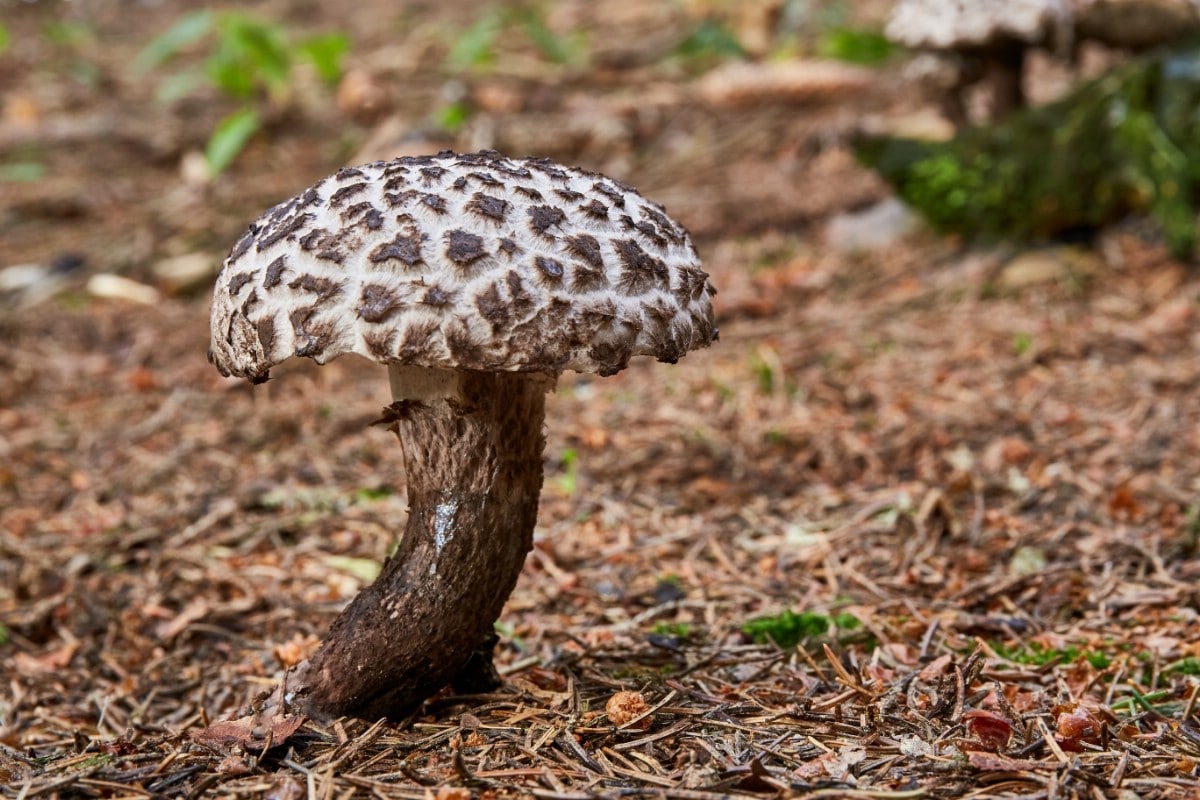
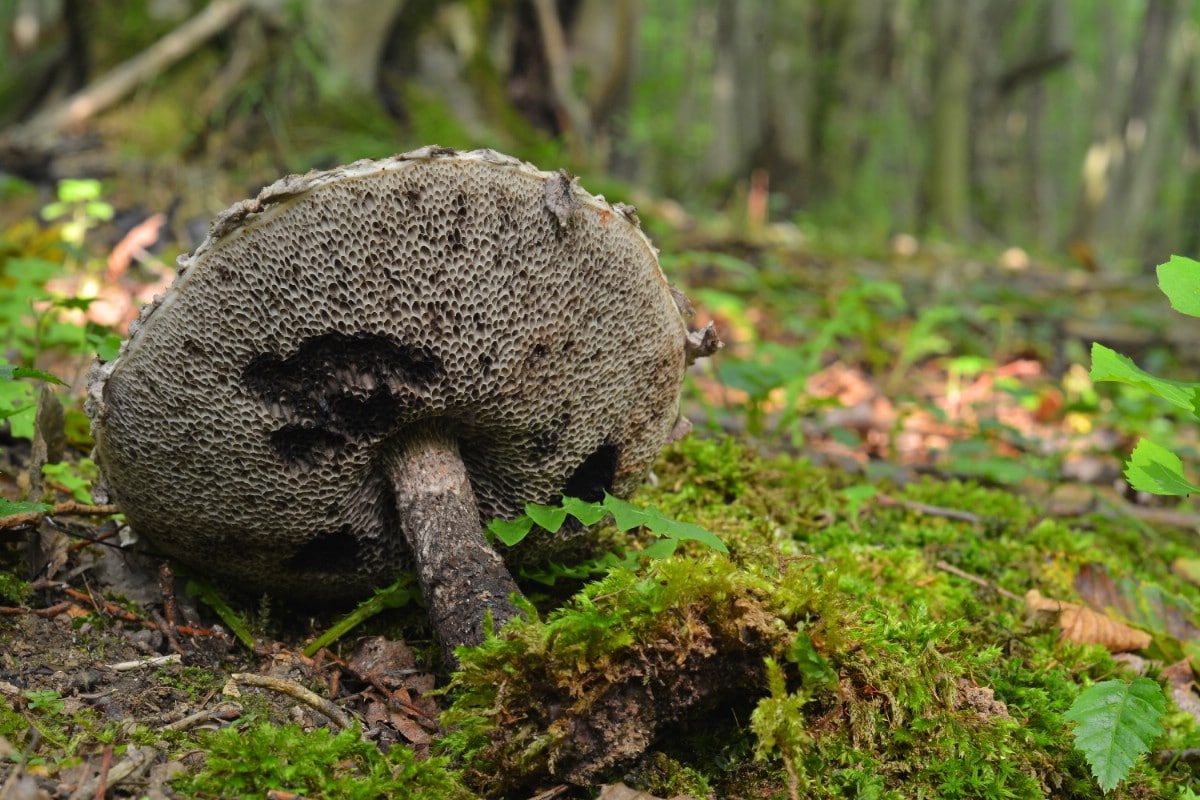
- Gills: None. A spongy layer of pores was on the underside of the cap instead.
- Cap/stem: Distinct from each other, with white and gray coloring. The cap is convex, with a layer of woolly scales on the top.
- Spore color: Unknown
- Bruising: Reddish at first, then slowly turning to black.
- Habitat: I picked this just off a trail in a mixed hardwood forest. It was growing alone on the ground, not on a tree.
- Time of year: Late August
- Smell/taste: Unknown
Easy to identify due to its unique cap and the presence of pores, this is a great example of a bolete. Boletes are defined as having a separate cap and stem with a spongy surface of pores. To be sure, I checked for the appropriate colors after bruising. Old man of the woods foraging information.
Chanterelle (Cantharellus sp.)
It’s definitely worth knowing how to identify the delicious chanterelle. See this page on chanterelle mushroom identification for a more in-depth article.
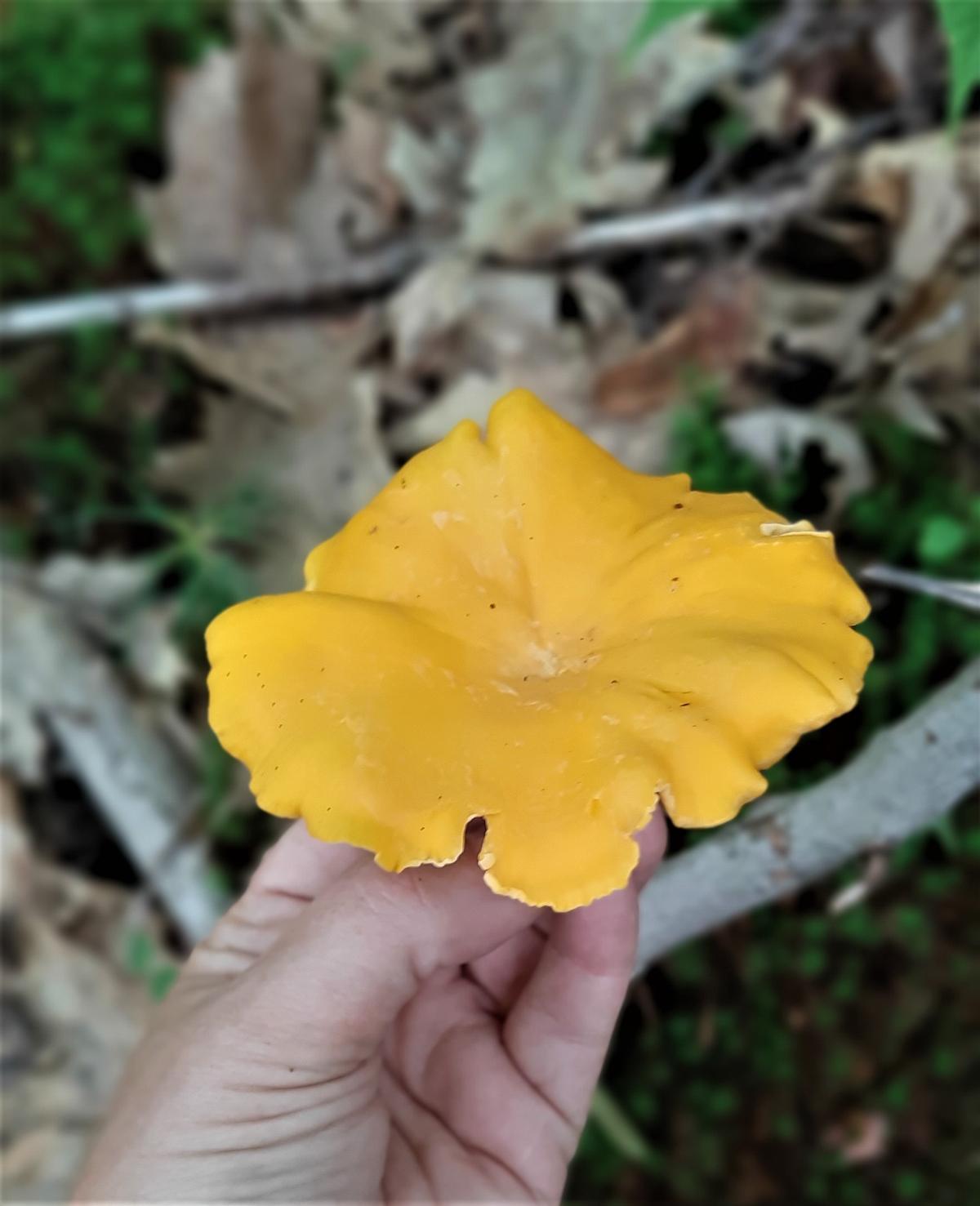
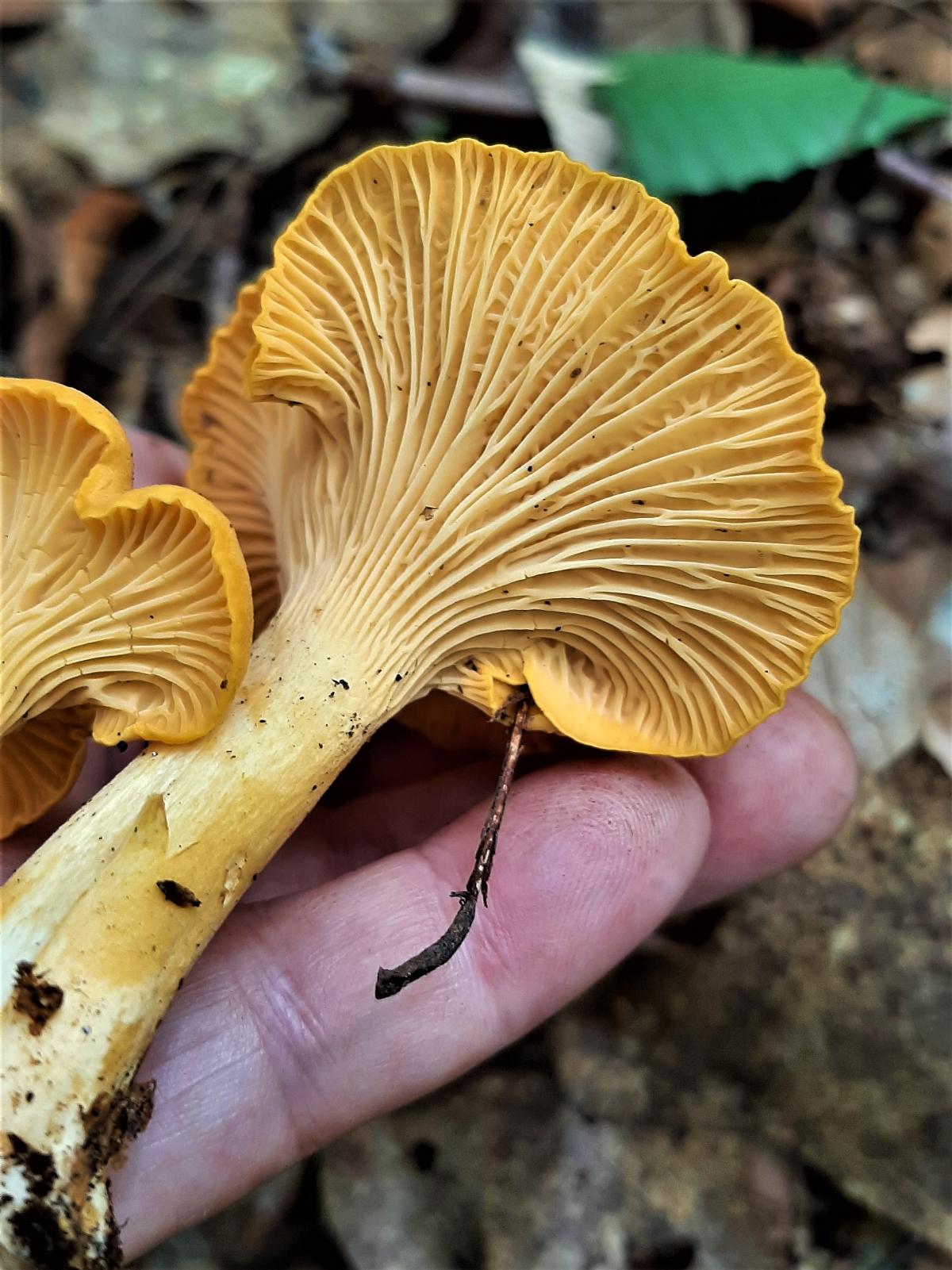
- Gills: None. Instead, there were wrinkled folds known as “false gills”. This is very important to look for with chanterelle identification. The pic to the right is a good example.
- Cap/stem: The caps were slightly vase-shaped. The stems had no bulb or ring and were not hollow. Both were an orange-yellow color.
- Spore color: Unknown
- Bruising: Unkown
- Habitat: On the ground at the edge of a trail in a mixed hardwood forest. I found more than one, but they did not grow in clusters.
- Time of year: August
- Smell/taste: They smelled slightly fruity/flowery.
The false gills, and the fact that they weren’t growing in clusters, led me to believe these were chanterelles and not poisonous jack o’lanterns. I did eat these, and they tasted great!
Northern Tooth (Climacodon septentrionale)
This was a fun surprise. When I saw it from the road it looked like an oyster mushroom. A closer examination revealed something else!
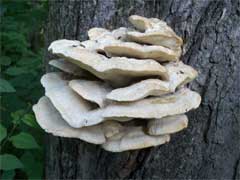
- Gills: None. Instead, there were small “teeth”, or spines, hanging from the underside of the cap. This made identification fairly easy.
- Cap/stem: No stem. The caps were a series of overlapping, shelf-like fruiting bodies. They were whitish and very tough.
- Spore color: Unknown
- Bruising: Unknown
- Habitat: Found growing on a dying maple tree.
- Time of year: September
- Smell/taste: Unknown
There aren’t as many mushrooms with teeth as there are with gills, and fewer still that grow on trees. The other clue here is habitat, as I found it growing on a dying maple. The northern tooth is a parasite that rots the heartwood of maple trees.
Below is a close-up of the tiny teeth.
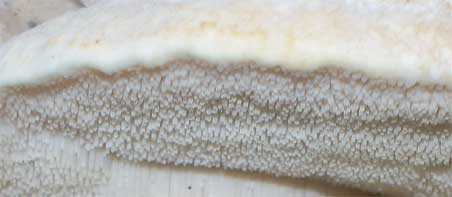
Russula (Russula sp.)
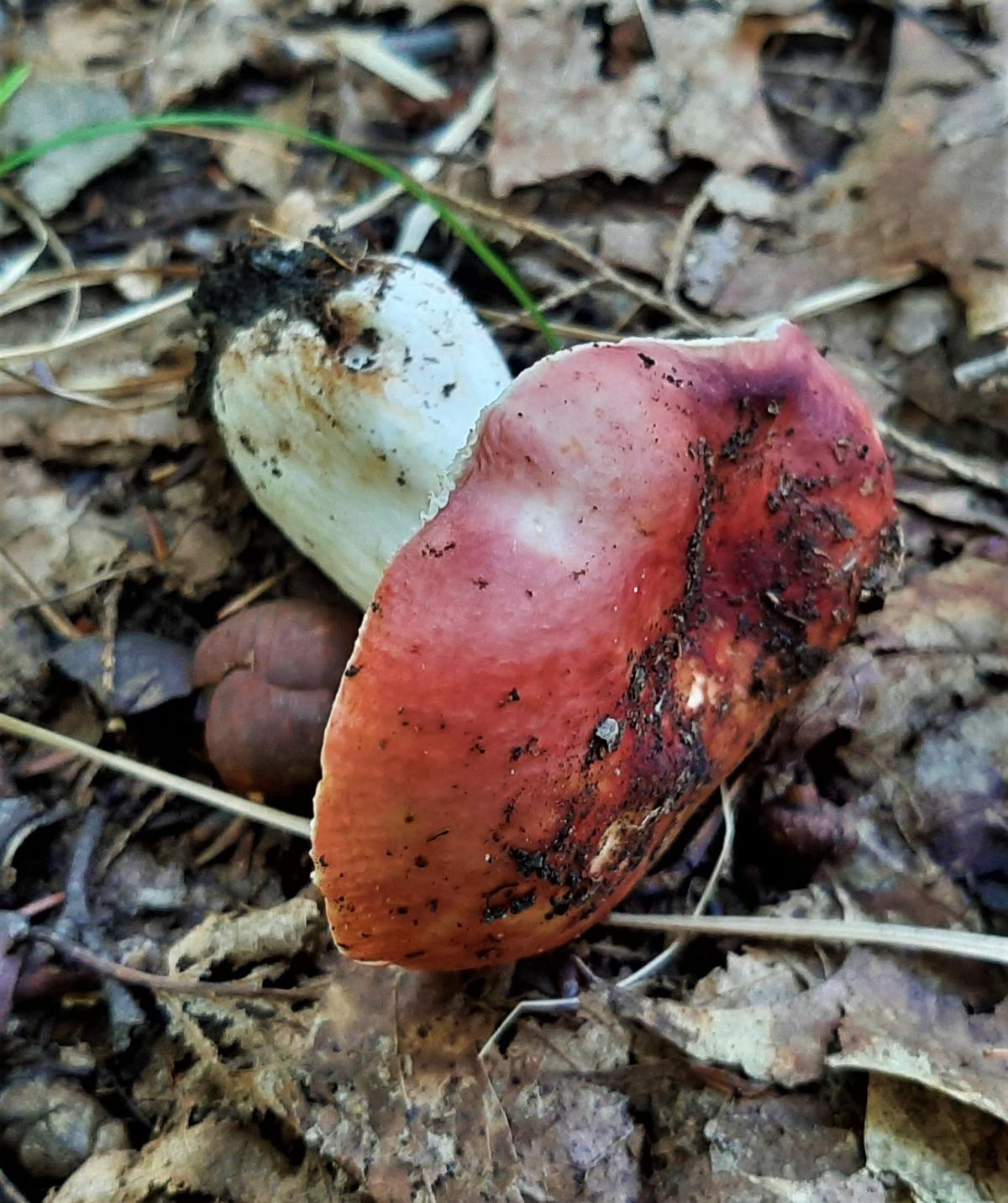
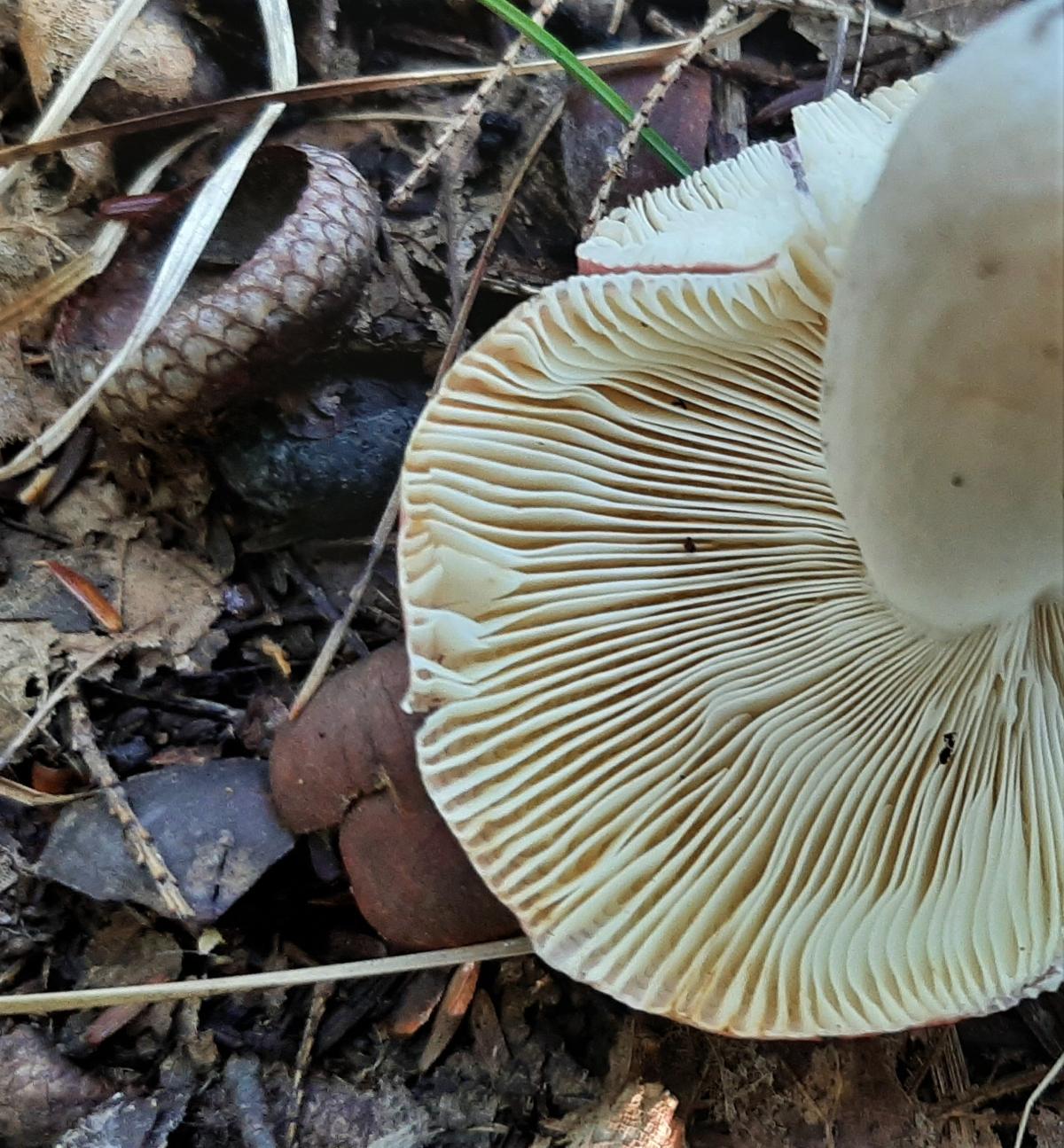
- Gills: Gills were white and attached to the stem.
- Cap/stem: Cap was red on top and slightly upturned. The stem was white with no ring.
- Spore color: Spore print was whitish.
- Bruising: Unknown
- Habitat: Found growing on the ground among leaf litter in a mixed hardwood forest.
- Time of year: September
- Smell/taste: Smelled fruity but the taste was very bitter.
The spore print, white gills, and red/white color combination indicates a mushroom in the Russula genus. Yet which one? Russula mushroom identification is very difficult, with microscopic information sometimes needed. I decided on one of the more common species that fit the description, Russula emetica.
Honey Fungus (probably Armillaria mellea)
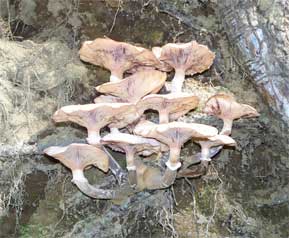
My apologies for the washed out picture.
- Gills: Brownish and attached to the stem.
- Cap/stem: The caps were slightly convex with a lightish brown color. The stems had a ring around them and were brown-white.
- Spore color: White
- Bruising: Unknown
- Habitat: Growing in a thick cluster on the roots of an overturned oak tree.
- Time of year: July
- Smell/taste: Unknown
Although these mushrooms matched all the characteristics of a honey fungus, I still took a spore print. A white spore print is an essential part of honey fungus identification.
I didn’t want to bore you with too much detail, but you can see the kinds of observations that you need for mushroom identification. Try to note all that you can when in the woods. Now go out there and start observing your own mushrooms. Let me know how it goes!

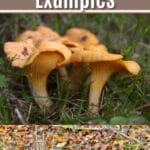
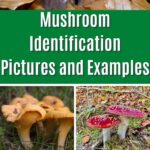
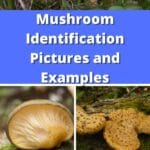

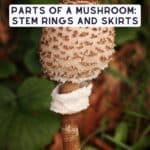
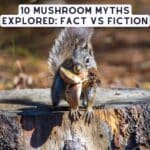
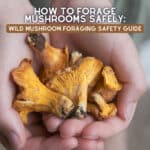
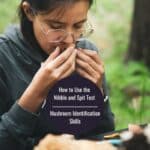
vincent
Back in 1964-65,myself (7yrs.old) and family hiked down in a place called “the devil’s punchbowl ” in South of England when I lived there(now have lived in California,USA,since I was 9).
My Father took the pic and it took me to now for to recover it.
Looks exactly the same.
Jenny
What a great memory! There are a lot of amazing mushrooms in California! I hope you are able to get out foraging :-).
tony
stayed at merchants hill with my school paragon secondary when I was eleven around the same year ran down and out of the bowl in cross country race dived straight into the swimming pool of the camp (not heated) thought I was going to die
Maxine Rosen
Need help with this one. I live in Atlanta ga and it looks like a “man’s genitalia”Someone posted about it on Nextdoor but I lost the post and don’t remember the name. Play a game with my grandkids identifying strange things. Can you help. I do have a pic but don’t know where to send. Thanks for your help
Jenny
Based on your description, it sounds like a stinkhorn. You can share pics on our facebook group and folks may be able to help you. Identification usually requires more than one picture, but people may be able to point you in the right direction 🙂 https://www.facebook.com/groups/340690111324762
make money online
Thank you for sharing indeed great looking !
Ms Rhonda G
Where are you located ? Im in Tn.
Im a beginner. I have picks of what grows around me. Are there any foraging ( identifying ) clubs or groups who go out looking, taking pics and/or show to how to identify them??
Jenny
I’m sure there are groups in Tennessee — google local mushroom foraging clubs for your area. It may depend on where in Tn you live. You can also start learning about identification here
David Yohalem
If you are in eastern TN, Knoxville houses a couple of world-class mycologists at UT, where there is a mycological herbarium. Vanderbilt (Nashville) also has a couple. But there are local groups that I’m sure you can find, with local experts to help you with identification. A good group will also have access to microscopes and literature that will only enhance your interest. Bad taxonomy kills! As my professor would say: there are old mycologists and there are bold mycologists, but there are no old, bold mycologists. Be careful and wash your hands after your forays.
Robert hatfield
i just picked mushrooms in my yard they have a bright white cap with light brown gills under?what do you think
Jenny
oh, that could be so many things! start here though, https://www.mushroom-appreciation.com/meadow-mushroom.html
Lydia
I love the way you post specific mushrooms separately (and what appears to be a new one daily), and especially the way you have outlined a guide to the points of Identifying Features — this will be a great example to friends who are showing interest and serious beginners who have not taken any Mushroom ID workshops, etc. Could you elaborate a little about the chew & spit test? Is that for only specific types of Mushrooms, such as Russulas? I think I’ve read about at least one other, but have forgotten which. I don’t think we do that with just any types, do we? Would love to hear more on this or if you have already touched on this topic, if you could direct to that article? Wonderful articles. Thanks.
Jenny
The chew and spit taste is biting off a very tiny piece of the mushroom, chewing it for a second to get the taste, and then spitting it out. As long as its not swallowed, its all good. You can do it with any mushroom. You have to ingest quite a bit of a mushroom to have any serious effects. The only one that might be a problem is the death cap, but even then, extremely unlikely and no confirmed reports of anyone having problems, as long as it isn’t swallowed.
Susan Applegate
This is a wonderful posting on mushrooms. I like how you simplify the identification markers. I’m new to mushroom knowledge so would appreciate your further blogs.
Jordan Dunning
The spores are brown
The gills are powered because I couldn’t open the bottom of the mushroom
And the skin is leathery and durable
The mushroom had no stalk
And can you tell me how to send pictures
Jenny
You can submit identification to our facebook group. Please make sure to read the pinned/featured post thoroughly and include all the necessary info
JoAnne
GREAT article packed with so much information. Today, here in Massachusetts I found a mushroom that I initially thought was Chicken of the Woods but there are some distinct differences as follows:
1. The section attached to the tree is high sheen shiny brown the turns rusty orange into yellow that finally turn off-white at the edges.
2.The mushroom cap is very shiny except for the off white edges.
3. There is no spore print.
4. The fruiting body is fan shaped with slight undulation along the fan and is very shiny.
5. The underside has waves that are tightly spaced. The underside is off-white with brown bruising.
6. It did not grow in overlapping tiers as does Chicken of the Woods. Each mushroom was spaced at least 6 or more inches around the trunk of a tree of which I forget the species.
7. The mushroom released very easily from the tree unlike Chicken of the Woods.
I would love to any guesses on this mushroom that you can provide and thank you for the time you take to read my lengthy description.
Jenny
Those are incredible notes — great observations! I can’t say, though, without seeing a photo. We have a facebook group you can submit photos and ID requests — make sure to read the pinned/featured post to include all the necessary information.